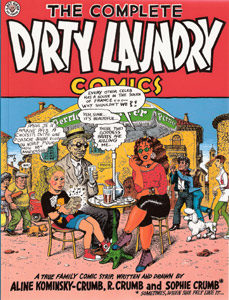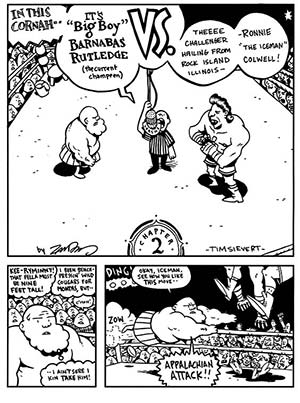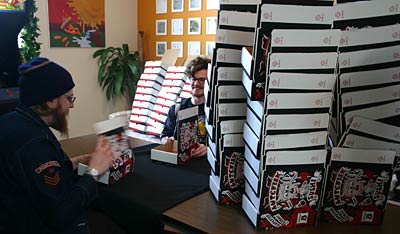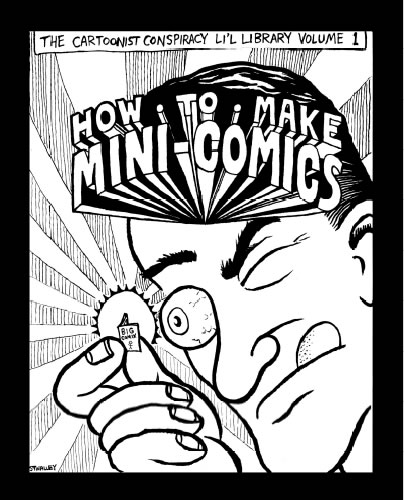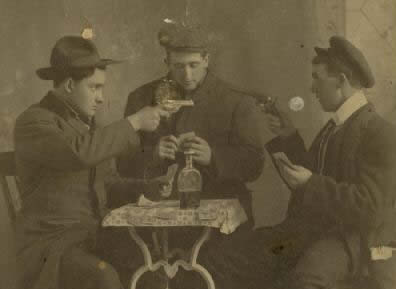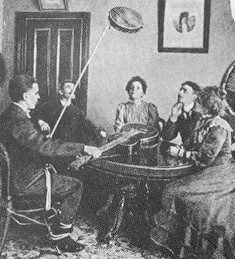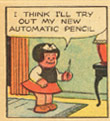This is the second part of a series on publishing your comics online… the first part can be found here.
The first thing you most likely will want to consider once you’ve decided to put some of your work online is how you want to get it there. There are a number of options for doing so, which I will discuss in this installment.
FREE COMIC HOSTING
Some of the options cost money, some of them don’t. There are five major free comics hosting sites that I have heard of:
Webcomics Nation
Comic Genesis
Drunk Duck
Smack Jeeves
Comicspace
(Comicspace also serves as a “social networking†site for cartoonists, and is very widely used, and possibly worth having an account at for reasons other than just posting your comics … you can see my page on it here. I don’t host comics there, or really update it, however… I’m just using it to attempt to drive traffic here).
Other options will certainly appear, so if you’re interested in doing this, you may want to try putting “free comic hosting” into your search engine of choice as well.
I have no experience with any of these free hosting options… I guess I’m a do-it-yourself kind of guy. Some of them offer expanded options for paid accounts as well, and I’m not sure what additional control that would get you. Thus, I am not qualified to discuss the nuances of each option here… if you are interested in them, you will have to explore them yourself. However, I will list briefly here some advantages and disadvantages that I see of using the free comics hosting services.
ADVANTAGES OF USING FREE COMIC HOSTING
1) They’re free.
2) I believe all of the options above add you in their comics listings and promotions, which is most likely quite advantageous for building an audience.
3) I would guess they are all pretty easy for a beginner to use… presumably you just start an account and start posting.
4) It is a lot easier and quicker to use a templated site like these all provide than to build a unique site yourself.
5) You will have an automated archive of your previous strips, so people can easily start at the beginning.
DISADVANTAGES OF USING FREE COMIC HOSTING
1) “You get what you pay for.” Your options are limited to what your host provides.
2) You won’t get a particularly intuitive URL for your site for free (like yourcomiccharacter.com or yourname.com).
3) You are most likely limited to the design, functionality, and the template or templates provided. A templated site may not be particularly attractive, and the limitations in functionality may frustrate you. A templated site is unlikely to present your unique character and creativity as well as one you have designed yourself.
4) I don’t believe most of the free options offer rss feeds, which are key to building your audience (Web Comics Nation does offer them). All free blog systems will offer this, however, which is a good reason to use a blog for posting your comics.
The advantages and disadvantages are pretty equally weighted on this one… it really depends on what you want to pursue. Free comic hosting is probably the easiest option for getting your work online, though.
ABOUT ONLINE SYNDICATION
One thing I would consider carefully in choosing your free host, if you decide to use one, is whether or not they offer RSS feeds. The only one I know of that does this currently is Webcomics Nation, although some of the others may as well. I would strongly advise you not to use any service that does not provide an rss feed of what you post.
Unfortunately, in the rss feeds I have subscribed to from Webcomics Nation, the rss feeds do not display the comics, but rather just let you know when a comic has been updated and lets you know to visit the site. I don’t know if it is optional or a requirement to not include the comics in the feeds, but I see this as a serious tactical error.
You want your readers to be able to access your work wherever they want to access it… forcing people to visit your site to see your content defeats the point of having an rss feed. That point is making your content easily available to anyone who wants to see it, however they want to see it… rss separates the content of a site from the presentation of the site, so that content can be viewed anywhere. If subscribers have to visit your site every time you post something rather than just viewing it in their newsreader of choice, I guarantee you will only have a fraction of the readers you would otherwise.
RSS stands for “really simple syndication.” It is the standard for syndicating your content around the web… you can read more about it here.
The concept of syndicating on the web is much different than the traditional concepts you may have with syndication. As with the traditional syndication of newspaper comics, for example, offering your content for syndication does indeed make it so others can repurpose all or part of your feed on their websites. Unlike newspaper syndication, if someone did use your feed, you would not get paid for it. Indeed, if you have a feed of your comics, someone can easily display your feed on their website without your permission, so if this loss of control bugs you, you may not want to offer a feed. It is a VERY good idea (and one that I have widely neglected myself) to put your domain name and copyright information inside of all images you publish, so wherever someone sees the image they will know where it came from.
The primary use of an rss feed, at least for a cartoonist, is to build a subscriber base. Your feed makes it so anyone using a newsreader on the web can subscribe to your comics and other postings in your rss feed and receive it automatically every time you post. Before feeds, if a user wanted to find the latest work by a cartoonist, they had to check their website regularly and dig around for any new material. With feeds, the subscriber recieves the information directly in his newsreader when it is updated without having to visit your website at all.
If you are unfamiliar with newsreaders, I HIGHLY recommend you acquaint yourself with one. I’ve used a few different ones, and there are a ton of them out there. I currently use Google Reader, which works extremely well. I’m currently subscribing to over 250 different rss feeds with it, and I can view the contents of all of those feeds in one place. If I checked all of the websites whose feeds I subscribe to every day, it would probably take all day. Instead I read them all in one place and can browse them quickly. Additionally, Google Reader makes it easy to organize and share feeds you are subscribing to. You can also access your Google Reader account from any computer with and internet connection… this is not the case with a newsreader that you run off of your desktop.
If you use the web regularly, using a newsreader will save you a tremendous amount of time, and beyond that it changes the usefulness of the web utterly. It makes it so all the content you are interested in comes to you, rather than you having to hunt it down. Some other popular newsreaders include MyYahoo, Newsgator, Bloglines… there are probably hundreds of them out there. I recommend Google Reader. Once you get set up with one, start subscribing to some sites to try it out… here are links to all my current feeds, which I’m sure you’ll want to subscribe to!
Stwallskull Feed
Stwallskull’s Interesting Links
Soapy the Chicken Feed
Conspire! The Cartoonist Conspiracy Group Blog Feed
Conspire! Conspiracy News Feed
Conspire! Conspirators Feed
Conspire! Cartooning Lessons Feed
Conspire! Comic News Feed
THE COMIC BLOG
One other potentially free option you may want to consider would be posting your comics as a blog. I publish my comic, Soapy the Chicken, as a blog, and it works pretty well for the most part. There are a number of free blogging options out there… Blogger (which is owned by Google and integrates somewhat with Google Reader) and WordPress are probably the best known. I’m currently using blogger for the Soapy site (and the Cartoonist Conspiracy group blog), and it works very well. Recently I started using WordPress for this blog on my stwallskull site, and it works even better than Blogger, it is much more flexible and powerful. However, if you are a beginner, Blogger may be a better option, as it is extremely simple to figure out. This brings us to another of my handy lists of advantages and disadvantages…
ADVANTAGES OF POSTING YOUR COMICS ON A BLOG
1) It will have an easy to use rss feed, so you can easily have people subscribe.
2) The templates tend to be very flexible, and with a little bit of work you can alter them fairly easily to have the features and look that you want for your site.
3) Blogs are pretty intuitive to use, and easy to update.
DISADVANTAGES OF POSTING YOUR COMICS ON A BLOG
1) If you are not hosting it yourself, you may want to find a separate place to host your images. Most blog accounts provide some image hosting space, but it may not be enough for your purposes. There are a number of free image hosting places out there on the web… far too many to list. Here are a few… again there are a lot of them out there…
imageshack.com
photobucketshop.com
flickr.com (note that while flickr works slick has a lot of advantages, they inanely require you to post more photos than printed stuff or they may freeze your account)
Asking for some good suggestions on the Cartoonist Conspiracy or Comics Journal message boards should get you a number of opinions about the best ones to use.
2) You’ll have to build an archive separately if you want a way for people to go through your comics from the first one to the last, and keep it updated… same deal with a gallery or other additional pages you may want. I’m currently managing the Soapy the Chicken archive with a flash movie that I built. My friend Sean Tenhoff archives his strip, The Bean Men, with a huge page of thumbnails of previous strips. Unfortunately, I don’t have a particularly easy solution to suggest for doing this… the automated archive is one of the big advantages of using the free comic hosting services.
3) There is probably a bit more of a learning curve than the comics hosting solutions… nothing worth getting intimidated about though.
YOU AND YOUR FEED
Once you have your feed set up, I also recommend registering it at feedburner.com, which is a useful website for optimizing and adding to your rss feed. Using it, you can make it easier to subscribe and add subscriptions via email, and it generally gives you more control over how your content gets syndicated, along with many other useful things.
You’ll want to make sure that your link to your feed is prominently displayed all over your site. With web design, redundancy of important information is a GOOD THING. You want people to find your subscribe link! Don’t just hide it at the bottom of the page! Make sure people know you are offering a subscription and have some prominent links that lead to your feed.
All links to your feed should lead to the same place… having multiple feed locations linked to can cause you headaches down the road. Again, if you set up your feed with feedburner, this provides a very friendly link that should work in any newsreader.
HOSTING YOUR OWN COMICS
If you want the maximum amount of control over the presentation of your work and how it is displayed, you’ll probably want to host a site yourself.
There are a ton of web hosting options out there, so you may want to research it more yourself… I think it would be pretty hard to find a better deal out there than Dreamhost, though. Dreamhost offers a vastly better deal than any other hosting provider I’ve ever seen, has a very intuitive backend to manage your website or websites with. Here is an overview of some of the things that make Dreamhost a great deal:
- You can host as many domains as you want there for no additional cost (other than the cost of domain registration).
- They offer the ability to easily add a WordPress blog, PHPBB message board, or a number of other complex applications to your website with basically the click of a button. Message boards can be huge community building tools for cartoonists, so that is a big perk.
- They give you more hosting space all the time, without raising your rates.
- You can set up email accounts at your domain. You get a free domain registration with membership.
- The cheapest hosting account is $7.95 a month, and has everything most people would ever need.
Note: One of the nuttier things Dreamhost does is offer an affiliate program where you get generously paid for each person you refer to their service that signs up. I’m not writing this hype for them for the referral, but because I genuinely believe they are offering an great service… however, I’d love to get your referral if you’re inclined to give me one. If so, please use the button below to sign up for their services, which has a link on it to let them know I sent you.

BUILDING YOUR WEBSITE
A lot of cartoonists are intimidated by the prospect of making their own websites. Discussing how to make webpages is out of the scope of this article, but I will note that it is no more difficult to make a webpage than it is to use a word processor (in fact, most modern word processors will export html pages if you want… which I do not recommend doing, as they usually do a very poor job of it).
The easiest way to make a html page is to use a WYSIWYG editor (What You See Is What You Get). I use Dreamweaver, which is excellent, but it isn’t free. There is a free one from the Mozilla (makers of the excellent Firefox web browser), and you can find a list of other ones here. Again, I can’t really recommend a free one since I have no experience with them. I encourage people to suggest some good ones in the comments to this post.
You can find some good articles on web development at webmonkey.com.
As far as designing your site goes, I do have some advice.
1) While it can be fun to go crazy with the navigation for the site and have it integrated into a drawing of a character with each of his limbs pointing to different sections of your site or something, don’t let this sort of thing be the only way to navigate your website. Be artistic with your site, but keep it intuitive. If you want to go crazy with the navigation, that’s fine… just make sure you provide a more obvious redundant navigation system as well. An unintuitive website will lose you viewers who may love your work if they could only find it. Again, to repeat: REDUNDANCY IS GOOD. Am I being redundant?
2) If you are using a blog on your site, they make excellent home pages. A blog can highlight all your most current content, and updated content is what people keep coming back for.
3) As I mentioned, you will definitely want to offer rss subscriptions. And you will want to make sure people know that you offer rss subscriptions in many places all over your site.
4) Keep the names of your navigation simple. HOME, GALLERY, LINKS, and CONTACT may not be the most exciting words, but they make a hell of a lot more sense to your users than MY PAD, THE HALL OF MYSTIC AMUSEMENTS, THE SPIDER LAIR and BUZZ ME.
REGISTERING A DOMAIN
If you’re pretty serious about your presence on the web, you’ll definitely want your own domain for people to find you at (like yourcomic.com or yourname.com). Registering a domain is easy… as I said, you get one for free with an account at Dreamhost and most other web hosting providers.
I keep my domain registrations separate from my hosting provider to make it easier if I ever decide to change hosting providers… A good place for finding what domains are available and register them is dotster.com.
When choosing your domain, I’d recommend generally staying away from anything that isn’t .com, .net or .org, as it will most likely cut down on your traffic… people will assume you are at .com. Registration for any of these domain extensions runs $14.95 a year on dotster… they often have sales on them too.
Dotster also offers hosting, but I’ve never used it… but like I said, it can be nice to have your domain registration separate from your web hosting, if you ever change hosting providers.
Next: Getting your Images Ready For the Web
Previously:
HOW TO GET YOUR COMICS ONLINE PART ONE: Advantages and Disadvantages of Putting Your Comics Online




